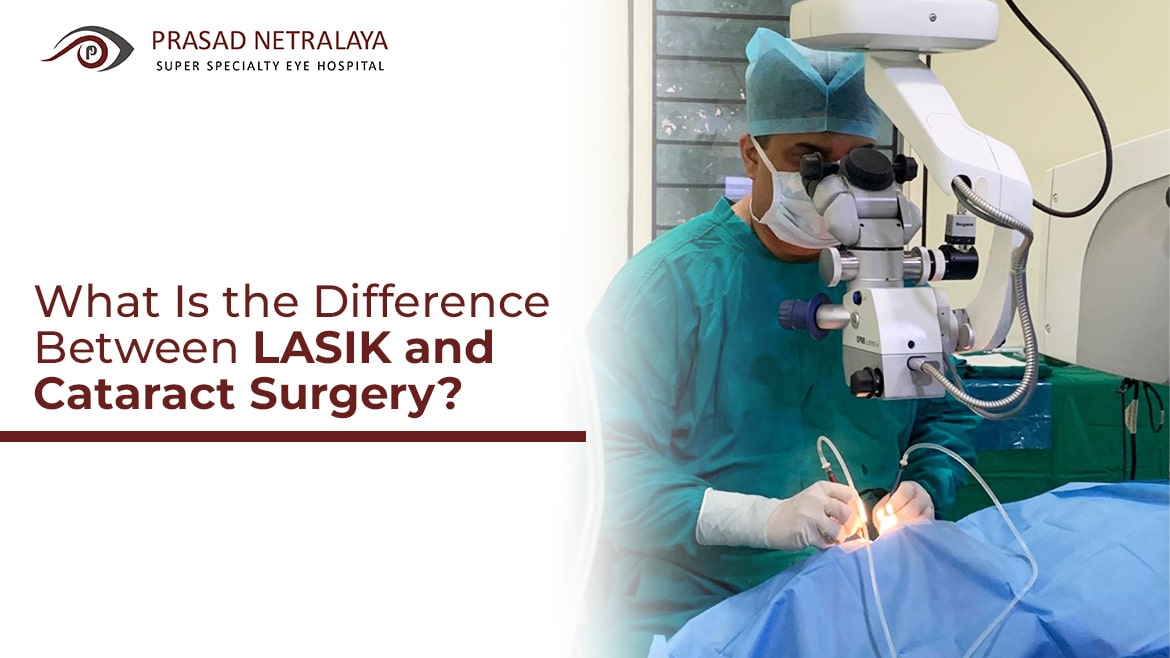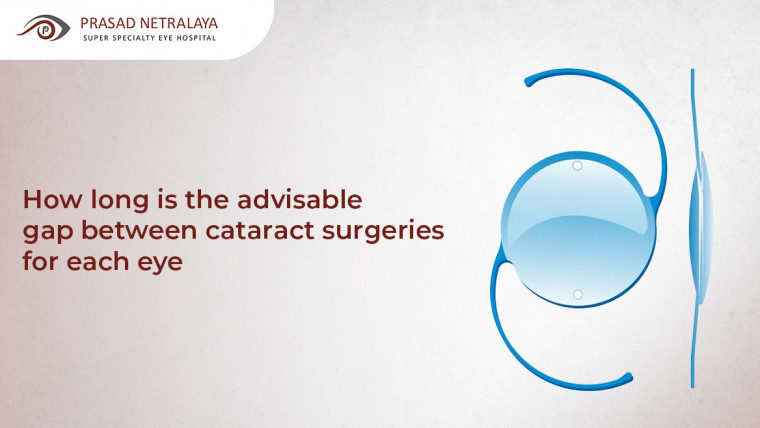LASIK surgery and cataract surgery are two of the most common and popular eye surgeries. However, due to the frequent usage and the lack of clarity, they are sometimes incorrectly used. In this blog, we will talk about the difference between LASIK and cataract surgery, what conditions LASIK treats, how many types of cataract surgeries there are and more to clear up any confusions you may have.
This blog is for all those who are confused between the two eye surgeries or which one they could benefit from one of them. Keep reading to have a better understanding of what each one means and how they differ.
Table of Contents
LASIK surgery
LASIK (Laser-Assisted In Situ Keratomileusis) is a procedure that is recommended for people with glasses or contact lenses. This surgery is the most well-known and widely used laser refractive surgery for vision correction.
What conditions does LASIK treat?
It treats refractive errors such as:
- Nearsightedness (myopia)
- Farsightedness (hyperopia)
- Astigmatism
How is LASIK performed?
LASIK surgery is usually completed in 30 minutes or less.
Before the procedure, numbing drops are placed in your eye and your eyelids are held open with the use of an instrument. A suction ring is then placed on your eye.
Your eye surgeon will use a small blade or cutting laser to cut a small hinged flap away from the front of your eye. The flap is then folded back so that a programmed laser can be used to reshape parts of your cornea. This is how lasik laser works. With each pulse of the laser beam, a tiny amount of corneal tissue is removed. After reshaping the cornea, the surgeon lays the flap back into place. The flap usually heals without stitches.
Cataract surgery
Cataract surgery is a process that removes your eye’s natural lens and, in most circumstances, replaces it with an artificial lens. The lens of your eye is normally clear, however, when it becomes clouded as a result of cataracts, this surgery is performed.
What condition does cataract surgery treat?
The clouding of the lens of the eye, which prevents light from passing through the eye normally, is treated through cataract surgery. If you have cloudy or blurry vision due to the clouding of your lens, can opt for cataract surgery.
How is cataract surgery performed?
Cataract surgery is performed in an hour or less.
Your doctor will first dilate your eye by placing eye drops in them. To numb the region, you’ll be given local anaesthetics. You may also be given a sedative to help you relax. The clouded lens is removed in one of two ways.
Phacoemulsification
A tiny incision is made in the front of your eye (cornea) and a needle-thin probe is inserted into the lens substance where the cataract has formed. The probe, which sends out ultrasonic waves, is then used to break up (emulsify) the cataract and suction away the fragments.
Extracapsular cataract extraction:
This method is used less frequently. Here surgical tools are used to remove the front capsule of the lens and the cloudy lens comprising the cataract
The artificial lens is implanted into the empty lens capsule after the cataract has been removed via phacoemulsification or extracapsular extraction.
In conclusion, cataract surgery and LASIK surgery are two procedures that can help with different vision problems. Cataract surgery is used to treat cataracts, which are clouded lenses in the eyes. LASIK surgery, on the other hand, reshapes the cornea to rectify how light is focused on the retina. If you think that you would benefit from either of these procedures, let Prasad Netralaya 一the best eye hospital for cataract surgery and LASIK surgery in Mangalore help you out. Call us at +91 9513596565 or book an appointment if you wish to visit in person. You can also book a teleconsultation.
Dr. Vikram Jain, M.S. had his medical training (MBBS) from Kasturba Medical College, Mangalore, India. He did his master’s in Ophthalmic surgery from Kasturba Medical College, Manipal. He currently manages the Glaucoma department of Prasad Netralaya hospital.



